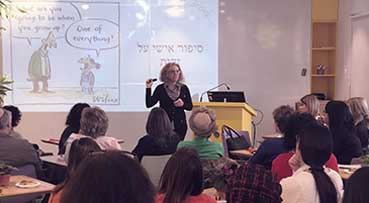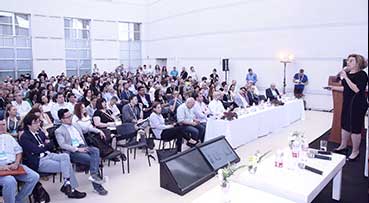You’re not imagining it—it’s real. Change Fatigue exists, impacting both individuals and organizations. Take, for example, a customer service manager named Alex. He set up a call center years ago, excelling in recruiting and training specialized teams, managing shifts and data, all within rigorously designed processes and solutions. Then COVID-19 hit, compelling Alex to swiftly transition to a decentralized customer service model, distribute equipment, adapt systems, restructure teams, shifts, and training. A couple of years later, he faced the challenge of deciding what to maintain and what to revert to pre-pandemic standards. Just when it felt like business as usual, artificial intelligence entered the scene. Alex’s managers decided to pioneer sophisticated chatbots—ones that interact with customers 24/7, mimicking human interaction. Once again, Alex found himself deeply immersed in change, reinventing customer service while maintaining a balance between technology and the human touch.
Confronted with change, most of us naturally aim to regain stability quickly. But in today’s world, change isn’t just a passing phase; it’s a constant presence in our professional lives. As change becomes more frequent, employees find it increasingly challenging to adapt. Gartner’s research shows that, since pre-COVID times, employees’ ability to manage change has dropped by 50%. The study highlights that burnout and resistance to change significantly detract from the employee experience. As a result, Change Fatigue has become one of the foremost challenges in people management.
Change Fatigue leads to a state of exhaustion, causing burnout, frustration, indifference, and cynicism. This significantly affects employee engagement and productivity, cutting performance and responsiveness in half and reducing discretionary effort and trust by a third. It also weakens the desire to stay with an organization. More than that, Change Fatigue makes us withdraw, drastically reducing our involvement in corporate networks and social interactions, which damages both personal and organizational performance. If not addressed, it could lead to high staff turnover, sinking morale, and decreased organizational effectiveness. Clearly, addressing Change Fatigue is crucial for both individual well-being and organizational success.
Equilibrium Amidst Continuous Change
For decades, the Kubler-Ross model, initially designed to describe the stages of grief, has been adapted as the “change curve” in business. This model describes a transition from one state to another, passing through what is often called the “Valley of Despair”. However, a significant limitation of this model today is its suggestion that change is a journey from one stable state to another. In reality, change is the very fabric of our professional lives—a continuous journey, making the idea of a static ‘post-change’ state outdated.
In this era of unceasing change, our aim should be continuous adaptation, maintaining equilibrium amid ongoing transformations. It’s no longer enough to rely solely on effective communication, thorough planning, and training for successful change management. It’s essential to acknowledge and integrate the concept of change fatigue into the organizational culture, starting with awareness and recognition.
Change fatigue arises not only from the quantity of changes but also from their impact, particularly on how they disrupt people’s daily routines. In an era where changes occur both internally within organizations and externally in the broader environment, it’s vital to systematically map the extent and scope of these changes. This mapping process identifies individuals, roles, or sections of the organization that are more prone to heightened fatigue. Recognizing this allows for a more nuanced approach to decision-making, taking into account the cumulative impact of change.
Change fatigue mapping in an organization entails a methodical approach to understand the impact of changes on employees, considering not just their time but also their emotional availability. This involves assessing the emotional weight of changes, in addition to their quantity. Techniques such as regular check-ins, anonymous surveys, and AI-driven analytics can help managers gauge factors like stress levels, engagement, and overall well-being. For example, during the COVID-19 pandemic, employees with children at home might have appeared less available, but issues such as loneliness or life disruption for those living alone also contributed to change fatigue. By acknowledging these diverse experiences, change fatigue mapping enables managers to distribute work more thoughtfully and effectively. This approach also helps identify departments or groups within the organization that are under strain due to external factors like market changes, allowing for strategic realignment of priorities and resources.
Recognizing that the strain employees face often stems from the volume and scope of changes, rather than the tasks themselves, fosters open conversations about the challenges and feelings of overwhelm. This acknowledgment can alleviate feelings of guilt or frustration. Gartner further suggests that reinforcing the ‘why’ behind our actions serves as an antidote to change fatigue. Consider Alex, who is in the midst of integrating AI chatbots to revolutionize customer service. He and his team can derive meaning from “leading the way with AI” or “enhancing customer interaction through advanced technology while maintaining a personal touch.” This strong connection to a meaningful objective can shift fatigue to renewed enthusiasm, a change that standard metrics and responsibilities alone are unlikely to achieve.
Even with these proactive measures in place, a pertinent question lingers: Is it possible to prevent change fatigue, particularly as the pace of change relentlessly accelerates?
Indeed, change fatigue can be mitigated, reflecting a shift in the workplace prompted by people’s efforts to control the pace of change. As work environments evolve, they’re becoming more attuned to individual needs in managing fatigue and change. In the post-COVID “new normal,” there’s a noticeable trend across industries where employees seek a collaborative role in shaping their work environment, conditions, hours, and even relationships. This shift is underpinned by a growing demand for psychological safety and authentic workplace dialogues that address not just what is expected from employees, but also what they need. The idea of integrating work into life, rather than fitting life around work, is becoming increasingly essential. Employees are increasingly advocating for the continuation of hybrid work models and greater autonomy in managing their time and workspace.
Viewed through the lens of Change Fatigue, these shifts represent people’s strategies for coping with an increasingly fast-paced work environment. They go beyond just better work management; they’re also about effectively handling interruptions. In this light, rest becomes not only legitimate but essential. The ability to control where and when one works, coupled with incorporating periods of downtime throughout the day and week, is key to preventing physical or mental burnout. For some, this could mean taking breaks throughout the day or scheduling a work-from-home day to alleviate stress, sleep in, and have a peaceful morning. Others might adjust their shifts to engage in fulfilling activities, be at home when their children return from school, or find purpose and connection by physically being in the workplace.
To prevent change fatigue, it’s crucial for organizations to move away from traditional work structures. Instead of insisting on return-to-office mandates or using termination threats, focus on engaging employees’ hearts and minds, and manage and measure work beyond the confines of time and space. Refrain from questioning why employees don’t adhere to previous work patterns, why they take time off for personal activities during the day, or whether they are “really working” when not in the office. By doing so, you may find that they are more engaged and productive, managing change fatigue in their own way. This approach benefits both the employees and the business.

![large-AX1A2125-2[1] large-AX1A2125-2[1]](https://niritcohen.com/wp-content/uploads/elementor/thumbs/large-AX1A2125-21-pnzedcs72atx5aeurqytqdiihxixlq02re9mlz805s.jpg)






